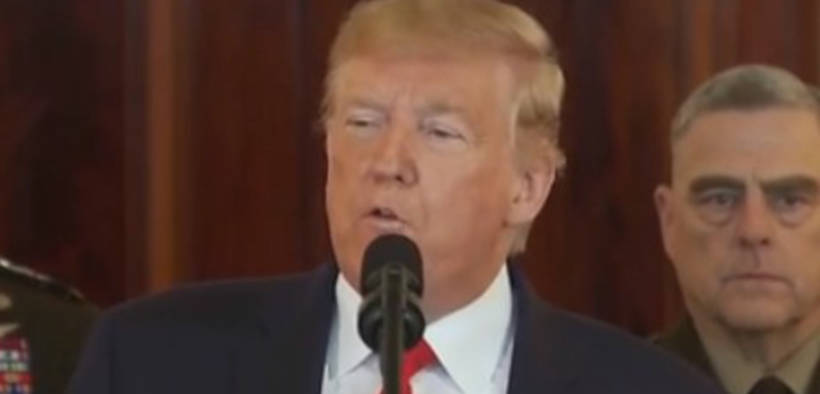Trump Bans Immigration, Citing COVID-19 Pandemic

President Donald Trump announced an upcoming immigration ban on Monday night, citing the COVID-19 outbreak and saying that the action will be temporary.
Protecting Jobs
“In light of the attack from the Invisible Enemy, as well as the need to protect the jobs of our GREAT American Citizens, I will be signing an Executive Order to temporarily suspend immigration into the United States!” Trump tweeted.
The US economy has been essentially shut down since March and 22 million Americans have applied for unemployment benefits.
Trump has not released concrete details on how long the immigration ban will last. US Citizenship and Immigration Services had already paused visa processing in March and with most international travel still restricted, critics questioned how effective an executive ban would be. Also, although America has restricted immigration at times in the past, a complete suspension has never occurred.
Since Trump took office in January 2017, a number of his policies have centered on stopping illegal immigration and his wall along the US–Mexico border prompted a slew of court cases. He also issued executive orders to prohibit immigrants from 13 predominantly Muslim nations, which also prompted court battles.
The new executive order expected from Trump is different, however, as it will completely pause nearly all forms of legal immigration. Jeff Sessions, former attorney general, is credited with the idea, according to POLITICO. On a Fox News segment with Tucker Carlson, Sessions pushed for the idea.
“This week, I called on the federal government to IMMEDIATELY halt immigration to the United States until Americans are back to work,” Sessions tweeted.
One Possible Exception
Although immigrants will be prohibited in order to protect jobs for Americans, visas for seasonal workers will possibly still be allowed.
“We want them to come in,” Trump said at the beginning of the month. “We’re not closing the border so that we can’t get any of those people to come in. They’ve been here for years and years, and I’ve given the commitment to the farmers. They’re going to continue to come. Or we’re not going to have any farmers.”
The possibility of allowing seasonal workers could undercut the argument for restricting immigration, which was championed by conservative groups.
“The president’s comments reflect a sensitivity to a primary purpose of all immigration laws of every country, and that is to protect a nation’s vulnerable workers,” said Roy Beck, president of NumbersUSA. “With tens of millions of Americans who want to work full time not able to, most immigration makes no sense today, and to allow it to continue at its current level at this time would show a callous disregard for those enduring deep economic suffering.”
Angered and Powerless
Democrats were not as enthusiastic for the new executive order and some suggested Trump is using the pandemic to continue his immigration crackdown.
“Trump failed to take this crisis seriously from day 1. His abandonment of his role as president has cost lives. And now, he’s shamelessly politicizing this pandemic to double down on his anti-immigrant agenda,” Sen. Kamala Harris, D–Cali, tweeted.
Rep. Joaquin Castro, D–Tex., echoed Harris’ sentiment, calling it “authoritarian-like move to take advantage of a crisis.” Instead, America “must come together to reject his division.”
Democrats on Capitol Hill may not have many options for overruling Trump’s order. Executive orders can be modified or removed by Congress only when the president is using powers granted by the legislature. If Congress were to declare the order unconstitutional, another possible remedy, it would potentially force a Supreme Court battle. According to research by William Howell, professor of American politics at the University of Chicago, the executive branch won court cases over executive orders 83% of the time from 1945 to 1998.
Historically, the president and Congress have enjoyed widespread authority over immigration regulations. Generally, they have used the power to set limits such as a cap on the green card lottery on a per-country basis. However, further immigration restrictions beyond numerical limits have been imposed at various points in the past, even by Congress.
The Chinese Exclusion Act of 1882 and the Immigration Act of 1924, which curtailed Eastern Europe, African, and nearly all Asian immigration, were the most restrictive measures in US history.















